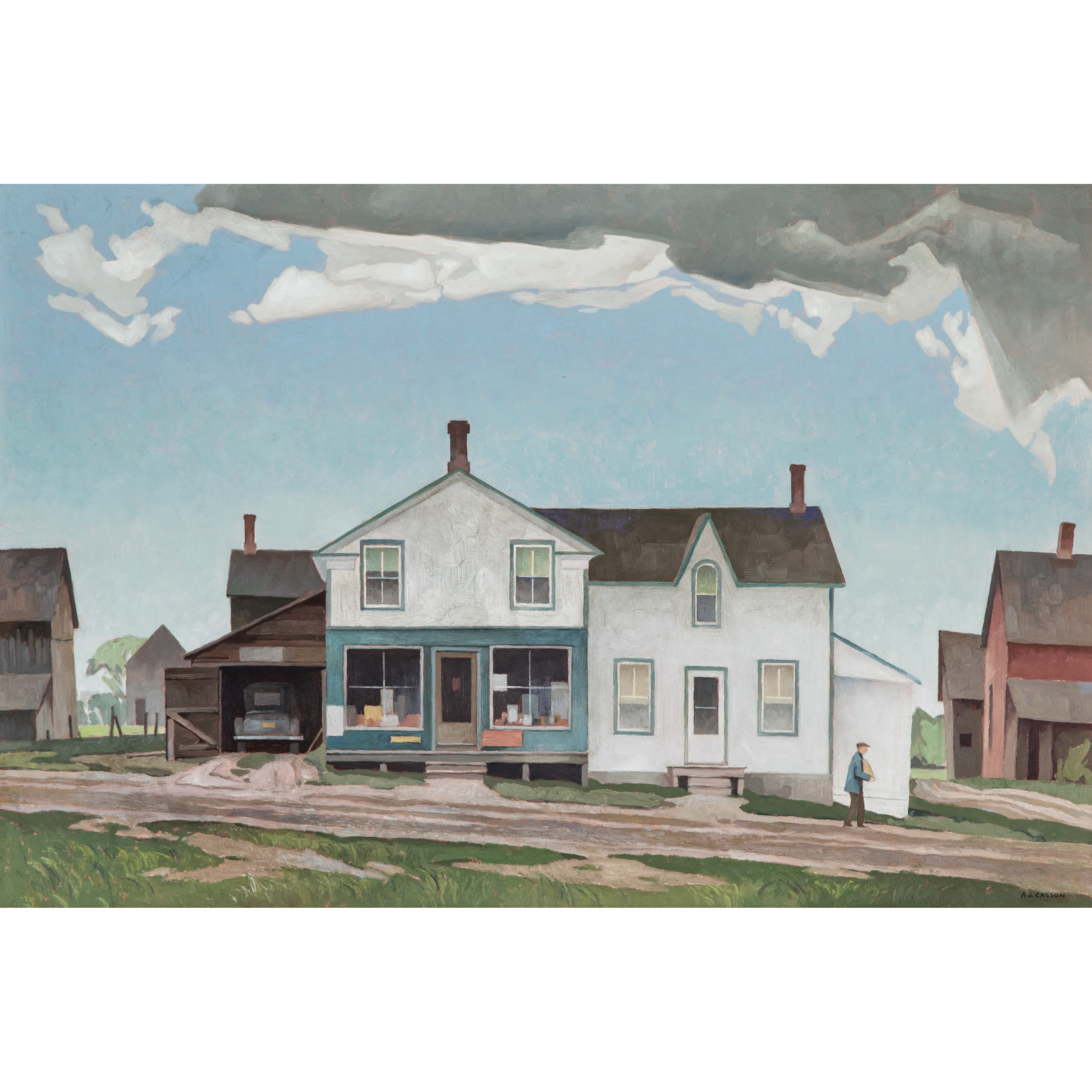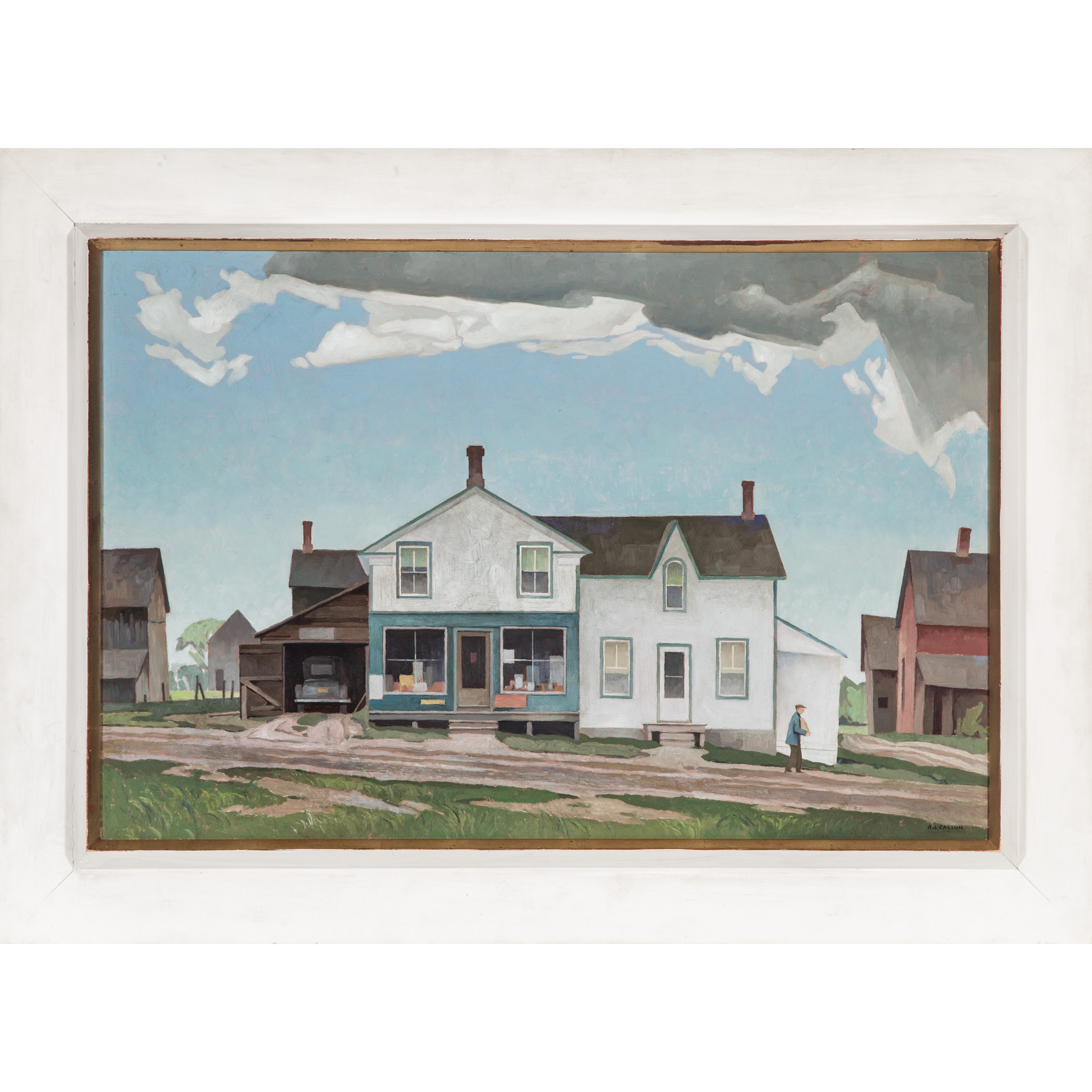Lot 50
ALFRED JOSEPH CASSON, O.S.A., P.R.C.A.

Additional Images

Provenance:
Roberts Gallery Limited, Toronto
The Estate of Geoffrey Armstrong (by descent)
Note:
When he joined the Group of Seven in 1926, A.J. Casson (1898-1992) was strongly influenced by the work of its established senior members. This influence gradually diminished as he turned to watercolour as a favoured medium (he was a founding member of the Canadian Society of Painters in Watercolour in 1925) and chose the villages and houses of rural Ontario as his primary subject matter. Looking back on his career from the 1970s, he called it his “Ontario quest.” Casson felt that his particular contribution to Canadian art lay in the preservation of rapidly vanishing rural villages by painting them.
Working as a commercial artist for the firm Sampson-Matthews Limited from the mid-1920s until his retirement in 1957 (stepping down from the position of vice-president and art director), Casson was a very talented designer. Integrating domestic structures with their regular shapes and lines into the natural environment engaged his keen sense of design. Casson’s choice of rural villages as a subject also fulfilled his desire to inject some humanity into Canadian painting, which had been dominated by landscapes devoid of figural content throughout the 1920s. Casson would repeatedly return to the subject of the rural village, featuring different types of buildings, often the country store. As his artistic priorities shifted, Casson altered the formal treatment of his paintings, applying greater or lesser degrees of abstraction.
Roadside Store is a classic Casson subject painted in 1961, later in his career. The picture is dominated by the store with its many additions, tacked on as necessity required. It is centred horizontally, with all other pictorial elements—barns, trees, threatening clouds—simplified and serving to balance the composition. Casson’s use of abstract patterning, which was pronounced in the later 1940s and 1950s, is now confined to the upper half of the painting. One solitary figure animates the scene.
A sense of nostalgia pervades the painting. The jalopy tucked in the garage, the unpaved road, and the buildings, settled comfortably on their foundations beside the sloping road, all speak of a bygone age. Casson was now painting the past. As the youngest member of the Group of Seven, he would become an important resource for their history in the 1970s, around the fiftieth anniversary of the Group’s formation in 1920.



